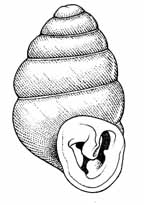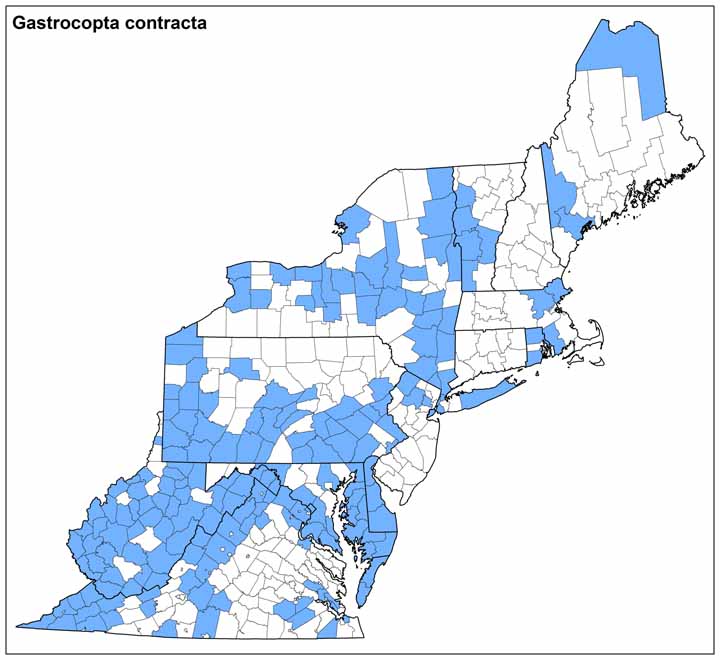Land Snails
.jpg)

Photo(s): Gastrocopta contracta shell © Jeff Nekola. Illustration © Kathy Schmidt from her series "Land Snails of New York State."
Click photo(s) to enlarge.
Gastrocopta contracta (Say, 1822)
Family: Vertiginidae
Common name: Bottleneck Snaggletooth
Identification
Height: ~2.3 mm
Width: ~1.2 mm
Whorls: 5
This animal has a whitish, cone-shaped shell with a fine radial microsculpture. The final whorl narrows before it expands widely at the aperture, which is crowded with five irregular lamellae. This species is easily distinguished from all other eastern Gastrocopta species by its strongly conical shell and folded, sheet-like parietal lamella in the center of the aperture (Nekola & Coles, 2010).
Ecology
Gastrocopta contracta occurs in leaf litter and under logs in a wide range of habitats, ranging from mesic to wet, and forested to open. Although occurring in higher numbers in base-rich sites, it is also frequently present in base-poor locations (Nekola & Coles, 2010). In Tennessee this species was found in a wide variety of habitats but had an affinity for neutral soils and late stages of forest succession (Coney et al., 1982).
Taxonomy
Synonyms for this animal’s name include Pupa contracta, P. deltostoma, P. nebraskana (Pilsbry, 1948), Gastrocopta contracta climeana.
Distribution
Gastrocopta contracta is one of the most wide-spread eastern North American pupillids (pupa-shaped shells), ranging from southeastern New Mexico and southern Manitoba east to northern Maine and the Florida Keys. It also extends south to Cuba, Jamaica and Veracruz in Mexico (Pilsbry, 1948).
In Virginia this species has been reported from many parts of the state. Its apparent absence from the Piedmont is almost certainly due to under-reporting.
Conservation
NatureServe Global Rank: G5, Secure.
Jeff Nekola 9/2012
Update Ken Hotopp 3/2018



